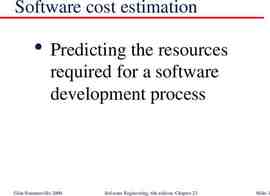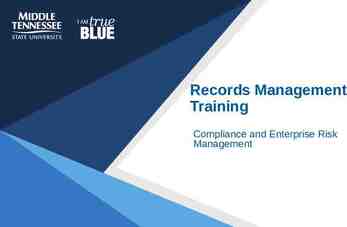NYS PENAL LAW
27 Slides379.21 KB

NYS PENAL LAW

AIM: HOMICIDE Is causing the death of another person. non-criminal homicides- killing: 1) in self-defense 2)by an accident 3)by a soldier in war. 4)by a police officer in the proper performance of his/her duties

criminal homicides: 1)Murder 1st degree 2)Murder 2nd degree 3)Manslaughter 1st 4)Manslaughter 2nd 5)Criminally negligent homicide (E-Felony)

MANSLAUGHTER 2nd degree- recklessly causing death of (C-Felony) 1st degree- -intent to commit serious physical injury & death results -intent to cause death but is under extreme emotional disturbance. (B-Felony)

MURDER 2nd degree- intent to cause death (A-Felony) 1st degree- (A-Felony) -intent to cause death of police officer -killing the witness to a previous crime -”contract killing” - killing more than 1 person at a scene

HOMICIDE & THE PENALCODE Criminally Negligent Homicide (E- Felony) a person is guilty of criminally negligent homicide when with criminal negligence, he causes the death of another Manslaughter in the second degree (C- Felony) A person is guilty of M/S II when he recklessly causes the death of another

Manslaughter in the first degree (B Felony) a person is guilty of M/S I when: 1. With intent to cause s.p.i. to another person, he causes the death of such person, or 2. With intent to cause the death of another person he causes the death of such person or a third person under circumstances which do not constitute murder because he acts under the influence of extreme emotional disturbance (mitigating circumstance)

Murder in the second degree (A Felony) A person is guilty of Murder II when 1: With intent to cause the death of another person, he causes the death of such person or third person, or 2. Under circumstances showing “depraved indifference” to human life, he recklessly engages in conduct which creates a grave risk of death to another person and then causes the death of such person. Murder in the first degree (A Felony) A person is guilty of Murder I when 1: With intent to cause the death of another person, he causes the death of such person and either: a) the victim was a police officer who was killed in the course of performing his official duties, and the defendant knew or reasonably should have known that the victim was a police officer; or b) the victim was a corrections officer who was killed in the course of performing his official duties.

POPULAR CRIMES AND THE PENAL CODE ARSON Arson in the Fourth Degree: (E Felony) when he recklessly damages a building or motor vehicle by intentionally starting a fire or causing an explosion Arson in the Third Degree: (C Felony) when he intentionally damages a building or motor vehicle by starting a fire or causing an explosion and had no reasonable grounds to believe that his conduct might endanger the life or safety of another. (no one is in the building).

Arson in the Second Degree: (B Felony) when he intentionally damages a building or motor vehicle by starting a fire, and when there exists a reasonable possibility that a person may be in building. Arson in the First Degree: (A-1 Felony) when he intentionally damages a building or motor vehicle by starting a fire or causing an explosion and when, a) such explosion or fire is caused by an incendiary device propelled, thrown or placed in a building or motor vehicle; and when b) the defendant knows that a person(s) are present inside the building.

LARCENY Petit Larceny: a misdemeanor when stolen property less than 1,000. Grand Larceny in the Fourth Degree: E Felony when stolen property and when:1. the value exceeds 1,000or 2. property consists of public records; or 3. secret scientific material; or 4. credit cards; or 5. property obtained by extortion, i.e. instilling fear that a person will a) cause physical injury b) cause damage to property c) use or abuse his/her position as a public servant Grand Larceny in the third: D Felony Stealing property in excess of 3,000 Grand Larceny in the second degree C Felony Stealing property by extortion & property exceeds 50,000 Grand Larceny in the first degree B Felony Stealing property where the value exceeds 1,000,000

ROBBERY Robbery in the third degree: D Felony forcibly stealing property; a lone holdup attempt or mugging Robbery in the second degree: C Felony forcibly stealing property and when: 1. He aided by another person actually present; or 2. on the course of the commision of the crime or immediate flight, he displays what appears to be a firearm. Robbery in the first degree B Felony forcibly stealing property and when, in the commision of the crime or immediate flight, he: 1. Is armed with a deadly weapon.

RAPE Rape in the third degree: E felony a male over 21 engages in sexual intercourse with a female under 17 years of age. (ignorance of female’s age is no defense). Rape in the second degree: D felony a person over 18 engages in sexual intercourse with a 14 year old or younger. Rape in the first degree: B felony infers the use of force or the fact of physical helplessness if the person is under 11 years old.

AIM: STATUS OFFENSES I. Status Offenses- actions that are only illegal because of age. A) statutory rape (NY State age of consent- 17) B) underage drinking

RAPE IN THE SECOND DEGREE. A person is guilty of rape in the second degree when: being eighteen years old or more, he or she engages in sexual intercourse with another person less than fifteen years old; or he or she engages in sexual intercourse with another person who is incapable of consent by reason of being mentally disabled or mentally incapacitated. It shall be an affirmative defense to the crime of rape in the second degree if the defendant was less than four years older than the victim at the time of the act. *Rape in the second degree is a class D felony.

RAPE IN THE FIRST DEGREE. A person is guilty of rape in the first degree when he or she engages in sexual intercourse with another person: By forcible compulsion; or Who is less than eleven years old; or Who is less than thirteen years old and the actor is eighteen years old or more.

KIDNAPPING Kidnapping the second degree: B Felony is solely a state offense. Kidnapping is defined as the “abduction of another”. Abduction is “restraining a person with the intent of preventing his liberation” by either a) secreting or holding him in a place where he is not likely to be found or b) using or threatening to use deadly force. Kidnapping in the first degree: A felony includes the above plus one of the following: a) a ransom b) holding for 12 hours or more with intent bodily harm; and c) death occurs.

NY STATE DRINKING AGE 1. Except as hereinafter provided, no person under the age of twenty-one years shall possess any alcoholic beverage, as defined in this chapter, with the intent to consume such beverage. 2. A person under the age of twenty-one years may possess any alcoholic beverage with intent to consume if the alcoholic beverage is given: (a) to a person who is a student in a curriculum licensed or registered by the state education department and the student is required to taste or imbibe alcoholic beverages in on-campus or off-campus courses which are a part of the required curriculum, provided such alcoholic beverages are used only for instructional purposes during class conducted pursuant to such curriculum; or (b) to the person under twenty-one years of age by that person's parent or guardian.

AIM: SELF-DEFENSE LAWS IN NY notes I. The Use of Deadly Force- can be used: A) If in your home and are not the initial aggressor. B) To defend yourself or 3rd person against the use of deadly force and You and 3rd person CANNOT RETREAT TO SAFETY.

NOTES C) If you reasonably believe another is attempting to commit: 1. forcible rape 2. robbery 3. burglary if: a. deadly force is necessary to stop it b. arson will be result of burglary

NOTES D) In helping to arrest a person who has committed and is fleeing from a: 1. murder 2. 1st degree manslaughter 3. robbery 4. forcible rape

REVIEW QUESTIONS: 1) In a criminal case the amount of proof necessary to get a conviction is called: Guilt beyond a reasonable doubt

2) A voluntary act of commission or omission is known as 3) Which of the following is considered a major category of crime 4) Which of the following is not a criminal state of mind 5) When a person acts in a conscious state of mind and is aware of the facts, which state of mind is apparent?

6) Desire to perform an act is known as 7) Disregarding a substantial and unjustifiable risk is referred to as 8) Failing to percieve or see a substantial or unjustifiable risk is known as 9) All of the following are considered Public Order Crimes except 10) Nonviolent crimes committed by corporations and individuals to gain personal or business advantage are considered 11) Civil wrongs are wrongs committed against 12) In a civil case the amount of proof necessary to win the case is called

13) A criminal wrong is a wrong committed against 14) In a criminal case the burden of proof is on the 15) What does presumed innocent mean 16) If an individual is found guilty of a crime and recieves 3 years in prison, he/she must have been convicted of a 17) In the case of Goldman v. Simpson, Goldman is the 18) In a Civil Court the plantiff may be seeking 19) Which is not considered a defense to a crime

20)Parking in a no parking zone is 22) Which of the following cannot be the Mens Rea of a crime 23) The sentence for an A Felony is 24) The sentence for an A Misdemeanor is

TRUE /FALSE 25) Robbery would be a considered a property crime 26) Class E felony is More serious than a Class A misdemeanor. 27) Intent or Criminal state of mind is the only element that need be present for an act to be a crime.






